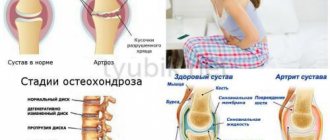Fosamax, 4 pcs., 70 mg, tablets
Fosamax, like other bisphosphonates, can cause local irritation of the mucous membrane of the upper gastrointestinal tract. Patients treated with Fosamax have experienced adverse reactions such as esophagitis, esophageal ulcers and esophageal erosions, rarely leading to esophageal strictures or perforation. In some cases, these adverse events can be severe and require hospitalization, so you should be especially careful to monitor any symptoms indicating possible problems with the esophagus. Patients should be warned to stop taking Fosamax and consult a doctor if dysphagia, pain when swallowing or behind the breastbone, or heartburn develops or worsens.
The risk of severe esophageal adverse events is higher in patients who do not follow the drug dosage recommendations and/or continue to take the drug when symptoms of esophageal irritation occur. It is especially important that the patient has recommendations for taking the drug, understands them, and is informed that the risk of developing damage to the esophagus increases if these recommendations are not followed.
There are rare cases of stomach and duodenal ulcers, sometimes severe and complicated (a cause-and-effect relationship with taking the drug has not been established).
Fosamax should be prescribed with caution to patients with exacerbations of diseases of the upper gastrointestinal tract, such as dysphagia, diseases of the esophagus, gastritis, duodenitis and ulcers due to the possible irritant effect of the drug on the mucous membrane of the upper gastrointestinal tract and worsening of the underlying disease.
There are cases of localized osteonecrosis of the jaw, associated mainly with previous tooth extraction and/or local infection (including osteomyelitis), often with slow recovery.
In most cases, bisphosphonate-associated osteonecrosis of the jaw occurs in cancer patients receiving IV bisphosphonates. Known risk factors for osteonecrosis of the jaw include cancer, concomitant therapies (eg, chemotherapy, radiation therapy, corticosteroids), poor oral hygiene and comorbidities (eg, periodontal and/or other dental diseases, anemia, coagulopathy, infection), and smoking. Patients who develop osteonecrosis of the jaw should receive specialized medical care from an oral and maxillofacial surgeon, and discontinuation of bisphosphonate therapy should be considered based on an individual assessment of the risk/benefit ratio. Dental surgery may worsen the condition. The management of any patient requiring invasive dental procedures (eg, tooth extraction, implantation), including bisphosphonate therapy, should be based on the clinical judgment of the treating physician and/or oral surgeon and an individualized risk/benefit assessment.
Bone, joint and/or muscle pain has been reported in patients receiving bisphosphonates. These symptoms are rarely severe and/or disabling. The time until symptoms appear varies from one day to several months from the start of therapy. In most patients, symptoms subside when therapy is stopped, but in some patients, symptoms reappear when the same drug or another bisphosphonate is restarted.
Pathologic (ie, low-force or spontaneous) subtrochanteric or proximal femoral shaft fractures have been reported in a small number of patients taking bisphosphonates. Some of the fractures were classified as stress fractures (also known as stress fractures, marching fractures, and Deutschlander fractures), which occur in the absence of trauma. Some patients have experienced prodromal pain in the affected area for weeks or months before the onset of a complete fracture, often associated with the characteristic radiographic appearance of a stress fracture. The number of reports has been very small, and stress fractures with similar clinical features occur in patients not taking bisphosphonates. Patients with stress fractures should be evaluated for known causes and risk factors (eg, vitamin D deficiency, malabsorption, corticosteroid use, history of stress fracture, arthritis or lower extremity fracture, excessive or increased exercise, diabetes mellitus, chronic alcoholism) and provide they receive proper orthopedic care. Pending evaluation results, consideration should be given to stopping bisphosphonates in patients with stress fractures based on a case-by-case assessment of the benefit/risk ratio.
Patients should be warned that if they accidentally miss a dose of Fosamax once a week, they should take one tablet in the morning of the next day. You should not take two doses on the same day, but subsequently you should return to taking the drug once a week on the day of the week that was chosen at the beginning of treatment.
Causes of osteoporosis other than estrogen deficiency, age, and glucocorticoid treatment should be considered.
In the presence of hypocalcemia, the level of calcium in the blood must be normalized before starting treatment with Fosamax. Other disorders of mineral metabolism (for example, vitamin D deficiency) should also be corrected. In patients with these disorders, it is necessary to monitor blood calcium levels and symptoms of hypocalcemia.
Because Fosamax increases bone mineral content, a small asymptomatic decrease in serum calcium and phosphate levels may occur, especially in Paget's disease of bone, with an initially significantly increased bone turnover rate, and in patients receiving glucocorticoids, which is accompanied by a possible decrease in absorption calcium. It is especially important to ensure adequate calcium and vitamin D intake in these patients.
In rare cases, hypocalcemia can be severe, usually in patients with a predisposition to this complication (hypoparathyroidism, vitamin D deficiency, calcium malabsorption).
Use in pediatrics
Fosamax has not been studied in children, so the drug should not be used in pediatrics.
Impact on the ability to drive vehicles and operate machinery
There is no evidence that Fosamax affects the ability to drive or operate machines.
Fosamax® (Fosamax®)
Alendronate may cause local irritation of the mucous membrane of the upper gastrointestinal tract. In this regard, while taking alendronate, caution should be exercised when prescribing the drug to patients with diseases of the upper gastrointestinal tract, for example, with dysphagia, esophageal disease, gastritis, duodenitis, ulcers, serious gastrointestinal disease suffered in the previous 12 months, for example, with peptic ulcers , as well as in case of active gastrointestinal bleeding, surgery on the upper gastrointestinal tract, with the exception of pyloroplasty. For patients diagnosed with Barrett's esophagus, the question of prescribing alendronate should be decided individually based on an assessment of the ratio of expected benefit to possible risk.
When treating with alendronate, there are known cases of adverse reactions from the esophagus (esophagitis, ulcer or erosion of the esophagus), sometimes severe and requiring hospital treatment, and in rare cases complicated by the formation of a stricture. Therefore, clinicians should pay special attention to any signs or symptoms indicating possible esophageal problems, and patients should be warned to stop taking alendronate and seek medical attention if symptoms of esophageal irritation, such as dysphagia, pain with swallowing, or pain behind the sternum, the appearance or worsening of heartburn.
The risk of severe adverse events from the esophagus is higher in those patients who violate the recommendations for taking the drug and/or continue to take it when symptoms of esophageal irritation appear. It is especially important to give the patient recommendations about taking the drug, so that he understands that the risk of developing damage to the esophagus increases if these recommendations are not followed.
Although no increased risk was observed in extended clinical studies of alendronate, rare cases of gastric and duodenal ulcers, sometimes severe and complicated, have been reported in post-marketing reports.
Cases of osteonecrosis of the jaw, mainly due to previous tooth extraction and/or local infection (including osteomyelitis), have been reported in cancer patients treated with intravenous bisphosphonates. Many of the patients also received chemotherapy and corticosteroids. There are also known cases of osteonecrosis of the jaw in patients with osteoporosis who took oral bisphosphonates.
When assessing an individual's risk of developing necrosis of the jaw, the following risk factors should be considered:
- bisphosphonate activity (highest for zoledronic acid), route of administration (see above) and total dose;
- cancer, chemotherapy, radiotherapy, glucocorticosteroids, smoking;
- history of dental disease, poor oral hygiene, periodontal disease, invasive dental procedures and poorly fitted dentures.
Before starting therapy with oral bisphosphonates, patients with poor dental status are recommended to have a dental examination and preventive treatment measures.
During a course of bisphosphonates, such patients are advised to avoid invasive dental procedures if possible. If a patient develops osteonecrosis of the jaw while on bisphosphonate therapy, dental surgery may worsen the condition. It is unknown whether stopping bisphosphonates reduces the risk of osteonecrosis of the jaw in patients requiring dental procedures. In each case, the decision must be made by the attending physician based on an assessment of the ratio of the expected benefit to the possible risk for a particular patient.
During bisphosphonate therapy, patients should be educated about the importance of good oral hygiene, oral health screenings, and to report any oral symptoms such as tooth mobility, pain, or swelling.
There are known cases of pain in bones, joints and/or muscles during a course of bisphosphonates. During post-registration use, in rare cases, these symptoms were severe and/or led to disability. The time of onset of symptoms varied from one day to several months after the start of treatment. In most patients, symptoms resolved after cessation of treatment. In some of them, symptoms reappeared when they resumed taking the same drug or a different bisphosphonate.
Cases of atypical subtrochanteric or diaphyseal femoral fractures have been reported during treatment with bisphosphonates, mainly in patients receiving long-term therapy for osteoporosis. These transverse or oblique fractures can occur along the entire length of the femur from the lesser trochanter of the femur to the supracondylar extension. These fractures occur after little or no trauma, and some patients experience severe pain in the hip or groin area, often accompanied by radiographic symptoms of stress fractures, weeks or months before the full picture of a hip fracture appears. Fractures are often bilateral, so the other (contralateral) hip should be evaluated in patients with a hip fracture taking bisphosphonates. It is known that these fractures heal poorly. If an atypical hip fracture is suspected, discontinuation of bisphosphonate therapy should be considered until an individual assessment of the ratio of expected benefits to possible risks is carried out.
Patients should be advised to report any pain in the hip or groin area during bisphosphonate therapy. All patients admitted with such complaints should be examined for an incomplete femoral fracture.
During postmarketing use, there have been rare reports of severe skin reactions, including Stevens-Johnson syndrome and toxic epidermal necrolysis.
Patients should be warned that if they accidentally miss taking FOSAMAX® once a week, they should take 1 tablet in the morning of the next day after they remember. You should not take two tablets on the same day, but subsequently you must return to taking the drug once a week on the day of the week that was chosen at the beginning of treatment.
FOSAMAX® is not recommended for patients with renal failure with a glomerular filtration rate <35 ml/min.
Causes of osteoporosis other than estrogen deficiency and age should be considered.
In the presence of hypocalcemia, the concentration of calcium in the blood must be normalized before starting treatment with alendronate. Other disorders of mineral metabolism (eg, vitamin D deficiency and hypoparathyroidism) should also be effectively treated before initiating alendronate therapy. In patients with these disorders, during therapy with FOSAMAX®, it is necessary to monitor the concentration of calcium in the blood serum and symptoms of hypocalcemia.
Because alendronate increases bone mineral content, decreased serum calcium and phosphate concentrations may occur, especially in patients taking corticosteroids in whom calcium absorption may be reduced. Usually this decrease is small and asymptomatic. However, there are rare cases of symptomatic hypocalcemia, which sometimes reaches a severe degree and develops in patients with a corresponding predisposition (for example, hypoparathyroidism, vitamin D deficiency and calcium malabsorption).
This medicinal product contains anhydrous lactose. Patients with rare hereditary diseases of galactose intolerance, lactase deficiency or glucose-galactose malabsorption should not take this drug.

